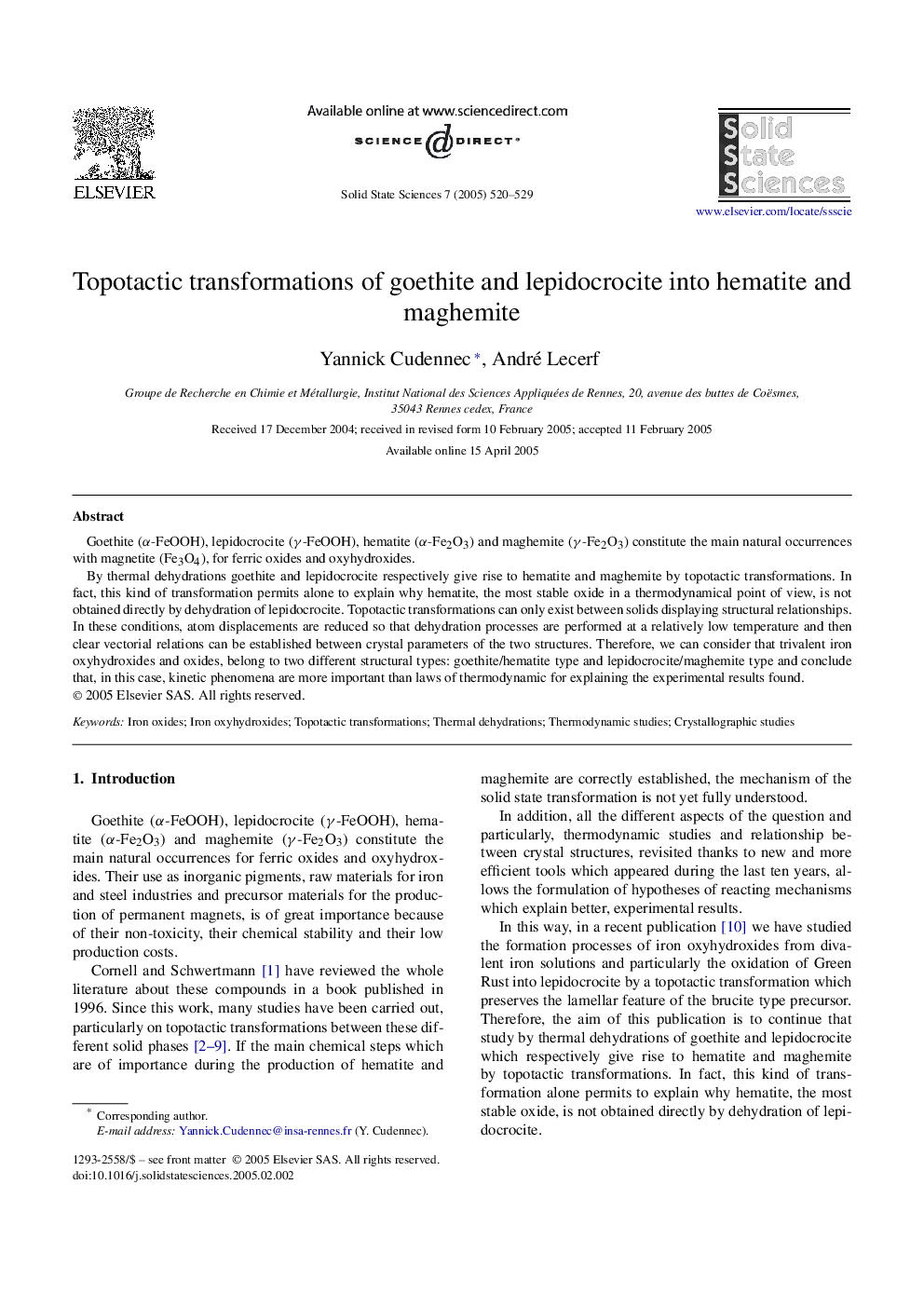| Article ID | Journal | Published Year | Pages | File Type |
|---|---|---|---|---|
| 10636908 | Solid State Sciences | 2005 | 10 Pages |
Abstract
Goethite (α-FeOOH), lepidocrocite (γ-FeOOH), hematite (α-Fe2O3) and maghemite (γ-Fe2O3) constitute the main natural occurrences with magnetite (Fe3O4), for ferric oxides and oxyhydroxides.By thermal dehydrations goethite and lepidocrocite respectively give rise to hematite and maghemite by topotactic transformations. In fact, this kind of transformation permits alone to explain why hematite, the most stable oxide in a thermodynamical point of view, is not obtained directly by dehydration of lepidocrocite. Topotactic transformations can only exist between solids displaying structural relationships. In these conditions, atom displacements are reduced so that dehydration processes are performed at a relatively low temperature and then clear vectorial relations can be established between crystal parameters of the two structures. Therefore, we can consider that trivalent iron oxyhydroxides and oxides, belong to two different structural types: goethite/hematite type and lepidocrocite/maghemite type and conclude that, in this case, kinetic phenomena are more important than laws of thermodynamic for explaining the experimental results found.
Related Topics
Physical Sciences and Engineering
Materials Science
Ceramics and Composites
Authors
Yannick Cudennec, André Lecerf,
